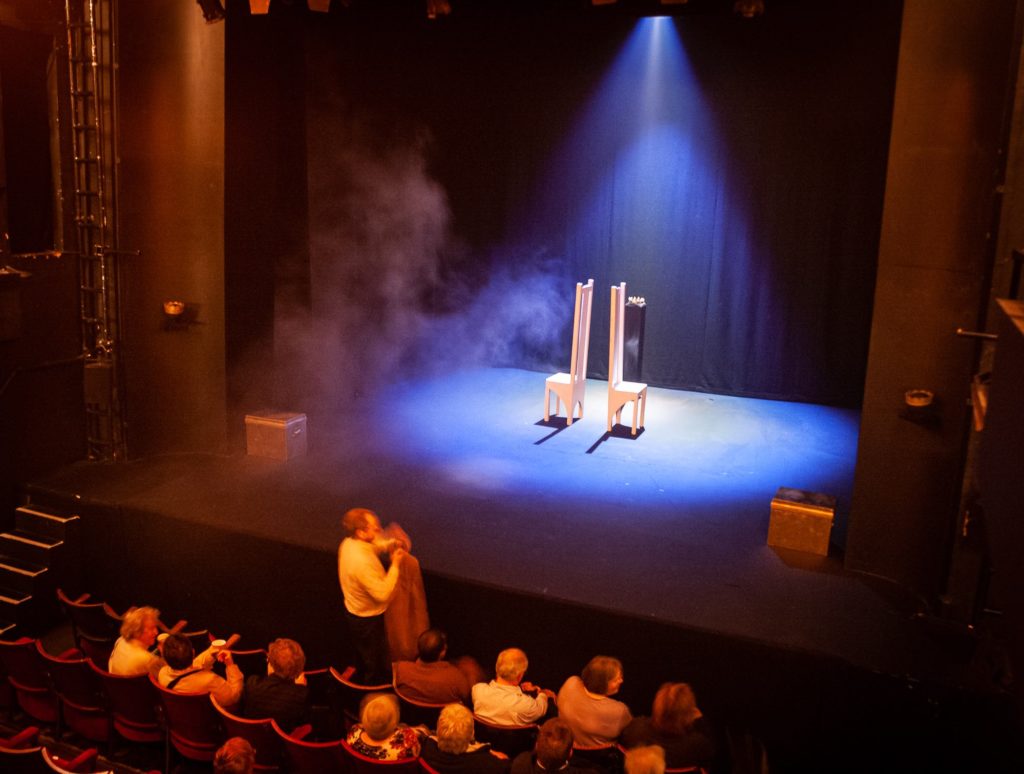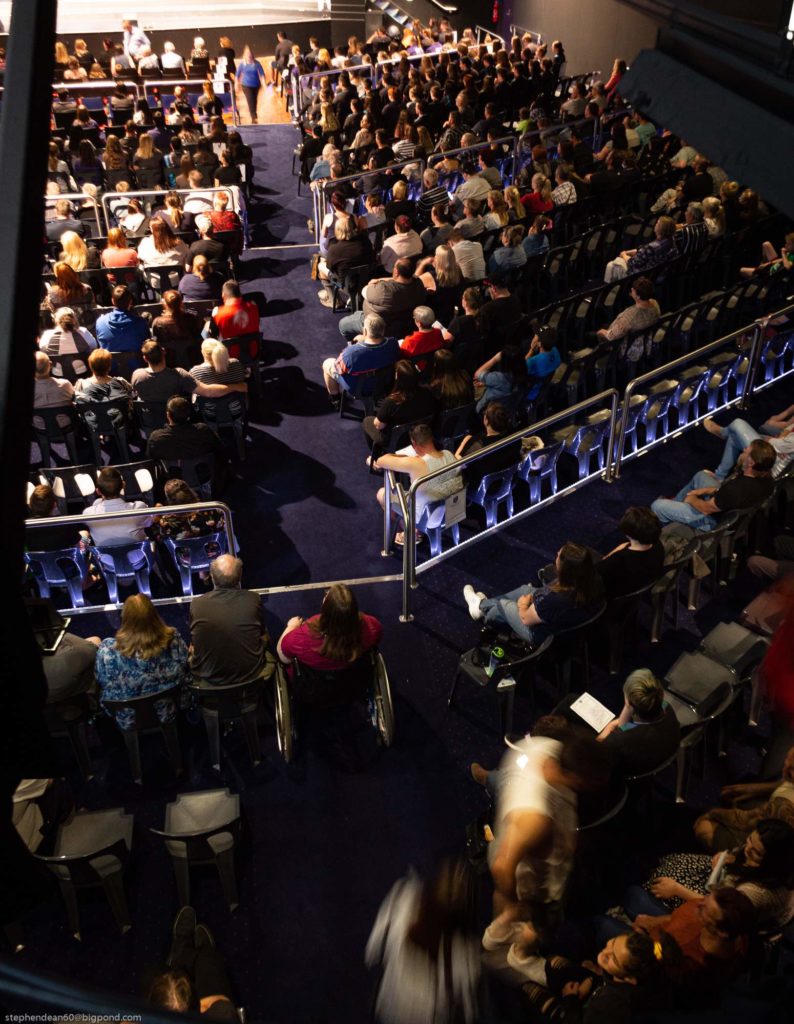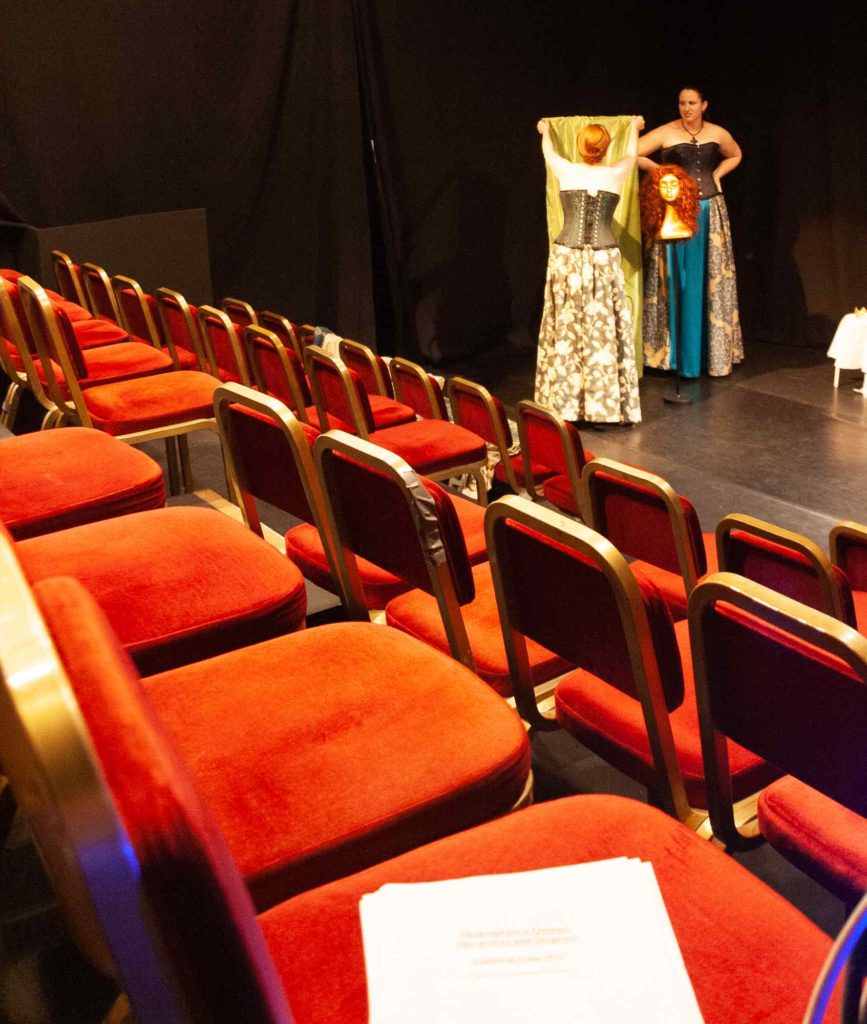News
29 Feb 2020
Audiences 101
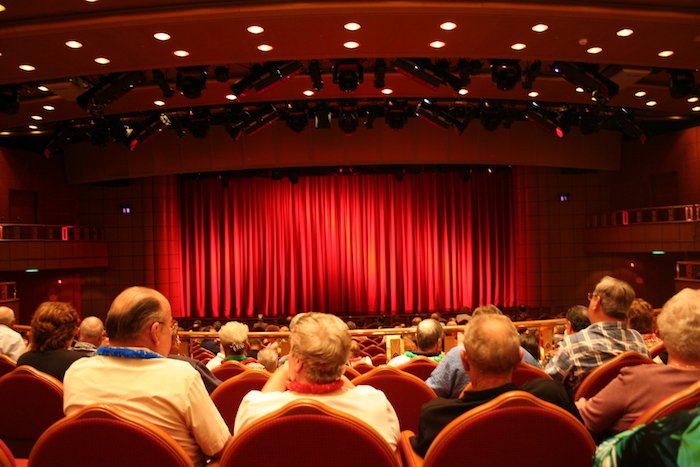
Subscribe to CX E-News
Audiences. What would we do without them? But they can also be a problem. These days audiences are as not well trained as they use to be. We need to start training people to sit through a theatre production without making it about them. We are seeing more and more problems with their behaviour. The smaller the venue the more I notice them.
As they enter the venue, they stand in the doorway, examining the seating, and search out their friends, as a crowd builds up behind them.
They then move up and down the aisles, pausing frequently to look and check the view and that the seats meet their requirements. All while remaining oblivious to the people behind them.
They make their way to the seats that they fancy, and sit, realise that they have not left enough spare seats for their friends and then shuffle along the row or move to another row, or even worse, climbing over the seats and laps of patrons already seated.
Then out with their phones, taking selfies and shots of the set. Texting their friends and Facebooking that they are being ‘cultural’.
Then the mobile phones that illuminate the audience’s faces come out, even though they try and mask the glow from others in the theatre.
Little do they know that the lighting and audio techs are behind them, and we can see.
The occasional patron with a young baby will come and see a show. Not too sure that a baby will understand the subtext, but they tend to comment loud and long, regardless.
Then there is the noisy eater, who only eats during the quiet intimate moments of a play. And it must be crunchy food and it must be in crinkly packaging, produced after rummaging through their backpack for five minutes.
And just as foyer doors are about to close, the 30-somethings will race to the bar for another drink.
The show is on a countdown, pre-show music finishes in seconds and it cues the cast. Crew panics.
The occasional audience member for dance school shows has come up to me and asked for the show to be brighter for their camera. My response? “I lit the show for a live audience, not your camera.”
School presentation nights can offer their own challenges in regard to audiences.
The presenters will trot out the usual line “Please hold your applause until the end” followed in about 30 seconds by “Good onya Tegan or Darryl.” And repeat every award and certificate for the night.
At the end of the show the audience wander onto the stage to touch and fondle props. Some get a shock when they discover the food that the cast are eating is real.
Or they hang around hoping to meet the cast, and we must gently tell them to leave so the crew can get on with their job.
Some folks will even talk back to the cast. I find this strange; they must be used to yelling at the television
Some folks will even talk back to the cast. I find this strange; they must be used to yelling at the television.
Then we have the reviewers, a necessary breed of audience that we encourage to attend productions to write a review, which the production company hopes will help sell tickets.
We know they are there to do a job, but some use their mobile phone to make notes, thus lighting up their faces for the cast to see.
I watched one reviewer mess around in Facebook Messenger. Or you get the reviewer that normally does real estate and has never been to theatre.
Thus, we have the skinny on the audience, without whom we would have no shows but who at times annoy themselves, cast, and crew.
CX Magazine – February 2020
LIGHTING | AUDIO | VIDEO | STAGING | INTEGRATION
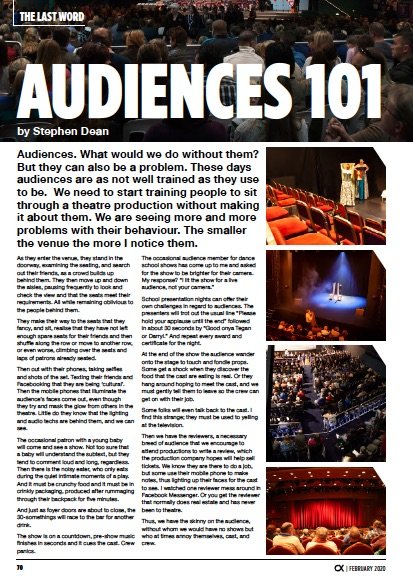
Entertainment technology news and issues for Australia and New Zealand
– in print and free online www.cxnetwork.com.au
© VCS Creative Publishing
Subscribe
Published monthly since 1991, our famous AV industry magazine is free for download or pay for print. Subscribers also receive CX News, our free weekly email with the latest industry news and jobs.

